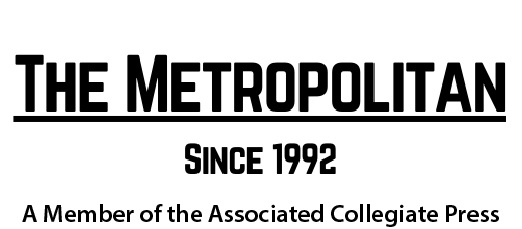Tikkun Bambara
Guest Opinion

Black Table Arts “Art is the future” event, April 24th, 2021. Credit: Uche Iroegbu.
When we refer to “Black ontology,” it seems, we are also thinking of spaces of abolition…which is to say, spaces whose existence constitute a combative imagination. The term “combative imagination” that I offer here speaks to ways of thinking and belonging that undermine state power and, more broadly, systems of authority.
The ongoing project to create abolitionist space in the university, at root, is a desire to be in communion; to be with others on terms not of the institution. As we venture to create these fugitive spaces, one could be reminded of the words of Harvard professor and Brazilian philosopher Roberto Mangabeira Unger in his lectures: “It’s like we created a space out of our rebellion but what fills the space?” How we answer that question has everything to do with the task we take up to carve out places of belonging under conditions of constraint within the university.
When looking into the labyrinth of Black literature, we find such episodes of this kind of imagination. I am particularly interested in exploring these episodes of Black ontology inside the literary works of Toni Morrison, but also within the lived activism of Cedric Robinson, a political theorist and historian who, in organizing circles, we typically associate with the term “racial capitalism.” What I am interested in is the kind of ways of being together we find in Black fiction and also the lives of particular activists who clue us into how to keep spaces of abolition flowing inside the university as we recognize it is a place of constant constraint.
If we zoom in on, for example, Toni Morrison’s “Beloved,” that in some ways can be seen as various episodes of Black ontology within each chapter; we see the kind of togetherness that can inform ways of belonging within the university. We can identify within the world of “Beloved” sensibilities that made relational bonds strong in the antebellum period that can instruct us on how to be together within the university as we try to challenge its power.
“Beloved” is in many ways a love story situated within terror. It is also a ghost story and a grief story. It tells a nonlinear narrative of Sethe and the consequences that haunt her. As it has been written about for decades, Sethe is a Black woman who, after a life in bondage, escapes to Ohio and now lives with her daughter, Denver, and elderly mother-in-law, Baby Suggs. Some moments of Black ontology that may be able to clue us into ways of getting together in the university are brought to us by way of Sethe’s daughter, Denver. There is a moment in the novel that almost seems like its own adventure where Denver remembers sneaking away from her home, house number 124; the house in some ways a character unto itself. She ventures to the “other house” where the “other children” were, and in this moment of the novel, we see Denver practice what could be described as Black fugitivity towards an education bound up in abolitionist practice as she seeks out the home of Lady Jones:
“Once upon a time she had known more and wanted to. Had walked the path leading to a real other house. Had stood outside the window listening. Four times she did it on her own—crept away from 124 early in the afternoon when her mother and grandmother had their guard down, just before supper, after chores; the blank hour before gears changed to evening occupations. Denver had walked off looking for the house other children visited but not her. When she found it she was too timid to go to the front door so she peeped in the window.”
What I want to suggest is that, like Denver, this is how we as students and faculty get to places of abolition in the university. In some ways we often feel like we’re in the woods seeking out other homes. Where the “other children,” or other students, are. We creep into these places, too timid at times to knock on the front door. We may be new to abolitionist vocabulary and frameworks. We may be unsure of the practical application of a more militant position inside an institution that may seem like an immovable block. What I want to put forward are ways of knowing we may be able to pick up from students like Denver. Morrison continues:
“Lady Jones sat in a straight-backed chair; several children sat cross-legged on the floor in front of her. Lady Jones had a book. The children had slates. Lady Jones was saying something too soft for Denver to hear. The children were saying it after her. Four times Denver went to look. The fifth time Lady Jones caught her and said, “Come in the front door, Miss Denver. This is not a side show.”
So she had almost a whole year of the company of her peers and along with them learned to spell and count. She was seven, and those two hours in the afternoon were precious to her. Especially so because she had done it on her own and was pleased and surprised by the pleasure and surprise it created in her mother and her brothers. For a nickel a month, Lady Jones did what whitepeople thought unnecessary if not illegal: crowded her little parlor with the colored children who had time for and interest in book learning.”
Within this episode of Black ontology—which is to say, “Black togetherness” —we see themes that resonate in Black abolitionist zones within the walls of the university. Denver sees her time spent in the parlor of Lady Jones as precious. Not only, I would say, because she’s learning, but also because she’s doing so with others in the context of bondage and constraint. Within this example we can see Lady Jones, a light skinned Black woman, being combative toward the state by the very nature of the activity happening within a context of surveillance and terror. Morrison reminds us the attitudes of the white gaze are such that they think the learning of Black children is unnecessary, if not illegal. But also within this moment of ontology, we get a vocabulary of pleasure and surprise. These kinds of zones that are organized by Black women such as Lady Jones instill sensibilities that the enslaved are outlawed in having; later in the book, Denver reminds us that “slaves not supposed to have pleasurable feeling of their own; their bodies not supposed to be like that.”
Within the “happening” of the crowded parlor in the woods, we see a practice of fugitive activity. There is also a pedagogy within Lady Jones—to welcome Denver, the outsider by the window, the onlooker who belongs to the dispossessed. This is also an abolitionist sensibility; it’s an abolitionist sensibility because abolition has always required collective study. And to be clear it’s not abolitionist first and foremost because they’re studying abolitionist theory—rather because the activity of study by those who are enslaved undermines the authority of the antebellum state. Also, to speak to clarity—the goal it seems within the parlor located in the woods of Ohio—it isn’t first and foremost to overthrow the state, but merely to practice the activity of study outside the gaze of the state. How might our spaces of abolition in the university be transformed and exhale—which is to say breathe better—by this reframe of the goal? This is not to say we can’t imagine learning zones that abolish the university. It is to say that the goal of the spaces we organize within the university need not take on such expectation in order to fulfill its meaning.
The sensibilities we are able to take from Morrison’s example of the parlor in the woods are in many ways the kinds of fugitive practices Cedric Robinson dedicated his lifework to. I think it is appropriate to speak about Cedric Robinson as a steward of what he called “the Black radical tradition”—one who traced the origins of flight and fugitivity by Black people across the diaspora. He taught within the university but was first and foremost forged with the people outside the university in taking up the task of liberation. Within the account of his life in works such as“Cedric Robinson: The Time of the Black Radical Tradition,” written by Howard professor Dr. Joshua Myers, we see an embodiment of fugitive practice that relates to Lady Jones. We see this particularly when we look at the ways in which Cedric taught at the University of Michigan in the 1970’s—from the Myers book:
“Being in ear shot of Detroit Black radicalism provided important examples to study and engage. Black Studies scholars could not afford to ignore this movement as it provided direct answers to questions of revolutionary organization. It was an instant and example of praxis…In fact, as an early example of Black Studies practice, the entire semester featured both former and current organizers as presenters…Teaching at the University of Michigan in both the political science and afro-american and african studies gave Cedric necessary classroom experience…Though the university tried to stop the practice, Cedric’s..1972 political science course featured a segment called “community control of prisons” that was taught by John Sinclair… the authority of the prisoner was the perspective that would reveal the prison as a side of oppression and brutality. Perhaps remembering his own experience working for Alameda County, Cedric‘s discussions closely resembled those we would later describe as ‘prison abolitionists.’”
Like Lady Jones, Cedric Robinson does the work of Black ontology outside the gaze of authority. Within the university, Cedric is a steward of relationality which emerge abolitionist currents before a vocabulary of abolition entered institutions of education in the 1970s. These spaces of Black togetherness require their stewards…which is to say those who care for and cultivate the relationships between the people that enter these fugitive spaces.
When thinking particularly about the context in which we find ourselves amidst a district-wide strike in Minneapolis, educators and paraprofessionals are bringing grievances to bear to improve their conditions within the ongoing labor of local education. To carve out abolitionist space in the university is to be in communion with those on strike. To be a steward of Black ontology, and by extension Black abolitionist space in the university, is to be a steward of relations that fill space that is indebted to rebellion outside the university. The desire held within these spaces are impulses first and foremost that seek to sustain the practice, the ongoing-ness, not the institution. To sustain these spaces is to undermine the authority of the institution because they’re not supposed to exist. It’s within this ongoing-ness we find a hope to rely on. Joshua Myers reminds us of this in his work on Cedric Robinson:
“Cedric’s contribution to this theorizing was a talk he titled, Toward Fascism? Race, The Two reservations, and the Materiality of Theory”…He continued: “The homeless have developed a knowledge of how to survive and help others survive; they are an enormous resource. I say that we cannot invent this stuff from some university, we can only hope it along.”
About the author:
Tikkun Bambara is a writer and arts organizer. He is currently pursuing a degree in Ethnic Studies, and is a student of Black studies and Black poetics. His work zeros in on Black ontology and the Black radical tradition as curricula for the future. He is the founder of a local art cooperative in South Minneapolis for Black artists.
Bambara received the 2022 Minnesota Campus Compact Presidents’ Student Leadership Award from the Institute for Community Engagement and Scholarship, the Verve Grant, the Beyond the Pure fellowship, The Emerging Writers Grant, and The Spoken Word Immersion Fellowship for his work. His essays are available at MNArtists.com through the Walker Art Center.


